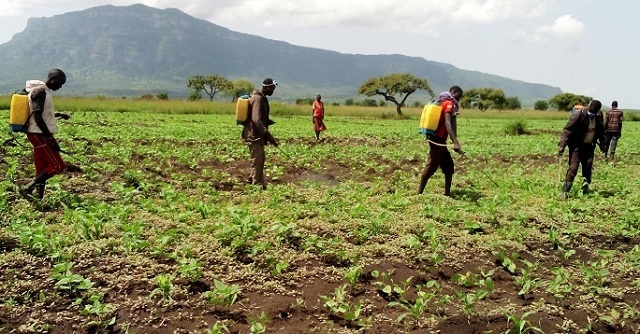
OPIION | Julius Akais | The landscape of agricultural financing in Uganda is undergoing a profound transformation, driven by a strategic approach that goes far beyond traditional lending models. At the heart of this revolution is a comprehensive understanding that agriculture is not just about production, but about creating a holistic ecosystem of financial support, risk management, and sustainable development.
The shift towards value chain financing represents a critical breakthrough in agricultural economics. Traditionally, banks viewed agricultural lending through a narrow lens, focusing primarily on production. Now, there’s a recognition that agriculture is a complex system involving input suppliers, producers, aggregators, traders, processors, distribution and marketing. This approach ensures continuous financial support throughout the agricultural cycle, dramatically reducing risk and increasing potential for success.
Since committing more fully to agricultural financing over the last five years, PostBank has found this to be key in creating a more resilient and dynamic agricultural sector.
Risk management has emerged as the cornerstone of this new approach. The agricultural sector is inherently unpredictable, plagued by weather uncertainties, market fluctuations, and production challenges. The solution lies in strategic partnerships that distribute and mitigate these risks. Insurance companies, government programs, and specialized agricultural support organizations now work hand-in-hand with financial institutions to provide a safety net for farmers. The government’s Agriculture Credit Facility, which offers loans at reduced interest rates and shares 50% of the risk, is a prime example of this collaborative approach.
Constant monitoring has become more than just a risk management strategy – it’s a developmental tool. Banks are no longer passive lenders but active partners in agricultural success. Through regular field visits, technical support, and staged funding, financial institutions are now directly invested in the success of agricultural enterprises. This approach goes beyond traditional lending, providing technical guidance, capacity building, and strategic support to farmers.
The government’s role has evolved from a distant regulator to an active participant in agricultural development.
Programs targeting large-scale commercial farmers, supporting specific value chains, and providing interest subsidies demonstrate a strategic commitment to agricultural transformation.
At the core of this innovative approach is a strategic program targeting commercial farmers operating on 50 acres or more. This initiative, developed through a collaborative effort between the Ministry of Agriculture, Animal Industry & Fisheries (MAAIF), Uganda Farmers Federation, and the Green Council, represents a bold attempt to address multiple critical challenges simultaneously: food security, agricultural commercialization, and economic development.
The program’s mechanics are particularly noteworthy. It focuses on specific strategic value chains critical to national food security: maize, beans, soya beans, sorghum, and hay. By concentrating on these key crops, the government is taking a targeted approach to addressing food production challenges. The most revolutionary aspect is the government’s commitment to subsidizing interest payments entirely for qualifying farmers.
Under this program, large-scale commercial farmers must meet specific criteria:
- Operate on a minimum of 50 acres
- Be a registered legal entity
- Focus on one or more of the specified value chains
- Work with government owned financial institutions (PostBank, Housing Finance, and Pride) with PostBank taking the leading given its bigger market share in agricultural financing.
The financial model is ingenious. Farmers will only be responsible for repaying the principal of their loans, with the government covering the entire interest burden. This effectively reduces the cost of borrowing to zero, creating an unprecedented opportunity for commercial agricultural development. For a country where 70% of the population is engaged in agriculture, this represents a transformative approach to economic development.
The focus is clear: promote food security, support commercial farming, and create economic opportunities for rural communities.
Sustainability has become more than just a buzzword – it’s a fundamental principle of modern agricultural financing. Banks are now evaluating loans not just on financial metrics, but on their broader impact. Environmental considerations, job creation, and community development are now integral to lending decisions. This approach recognizes that agricultural development is not just about financial returns, but about creating long-term, sustainable economic ecosystems.
The numbers tell a compelling story and feed into PostBank’s purpose of fostering prosperity for Ugandans. PostBank has seen an approximately 80% growth in its agricultural portfolio since 2020, a testament to the effectiveness of this new approach. Programs targeting women-owned businesses, support for smallholder farmers, and focus on key value chains like dairy, poultry, and coffee are creating new economic opportunities.
This transformation represents more than just a change in financial strategy. It’s a holistic approach to agricultural development that recognizes the complexity of the sector, the importance of risk management, and the potential for sustainable economic growth.
By viewing agriculture as an interconnected ecosystem rather than a simple production process, Uganda is pioneering a model of agricultural financing that could serve as a blueprint for developing economies worldwide.
The journey is far from complete, but the direction is clear. Agricultural financing is no longer about simply providing loans – it’s about creating partnerships, managing risks, supporting sustainable development, and ultimately, transforming lives.
*****
 The author is PostBank’s Supervisor Agriculture & Partnerships
The author is PostBank’s Supervisor Agriculture & Partnerships

